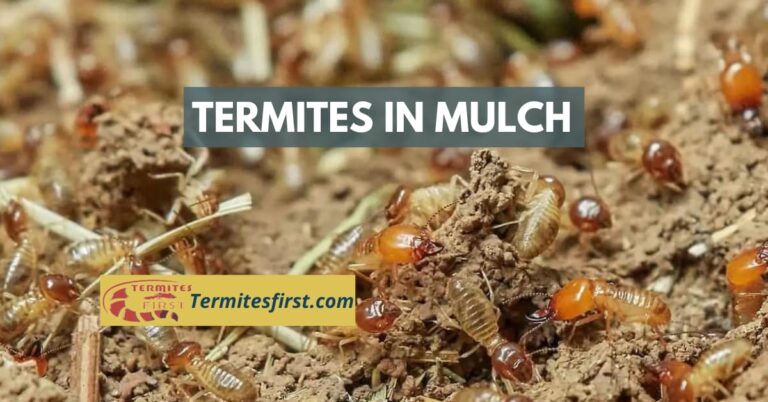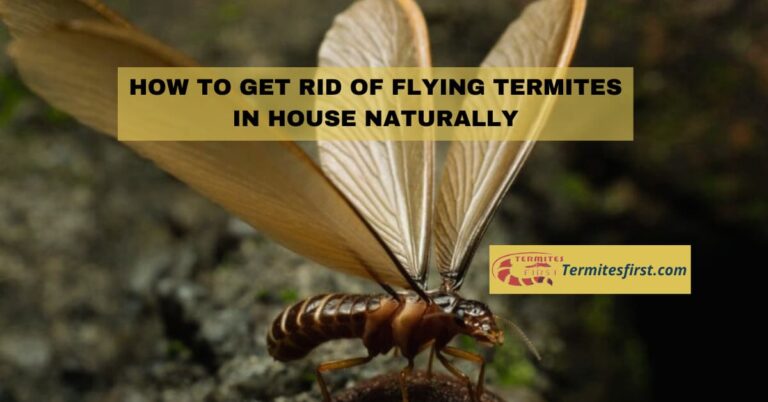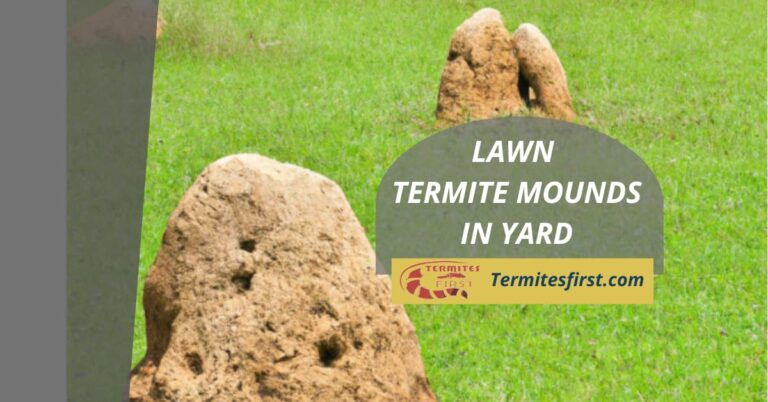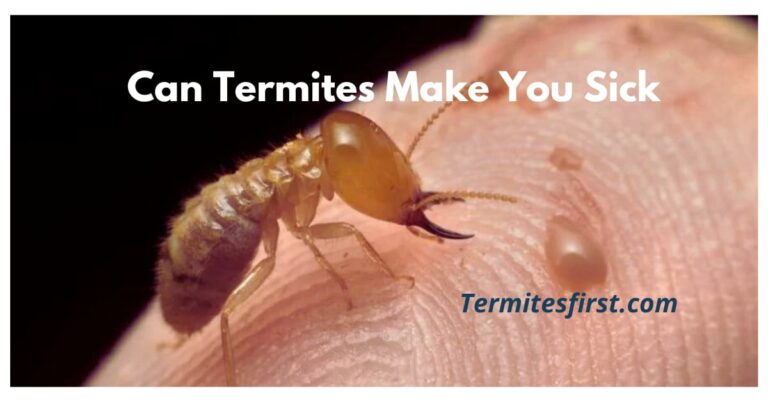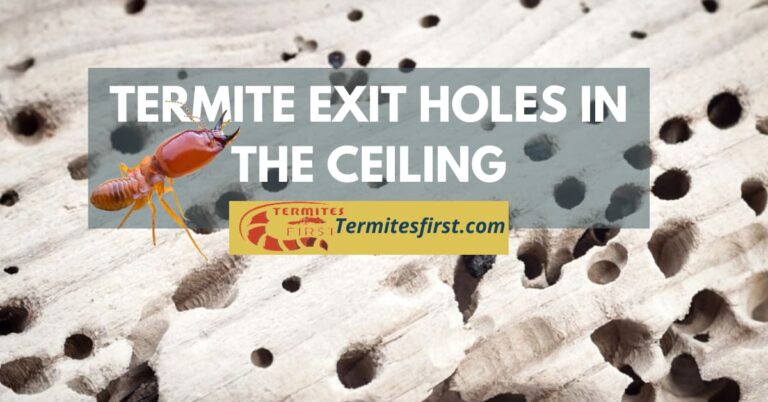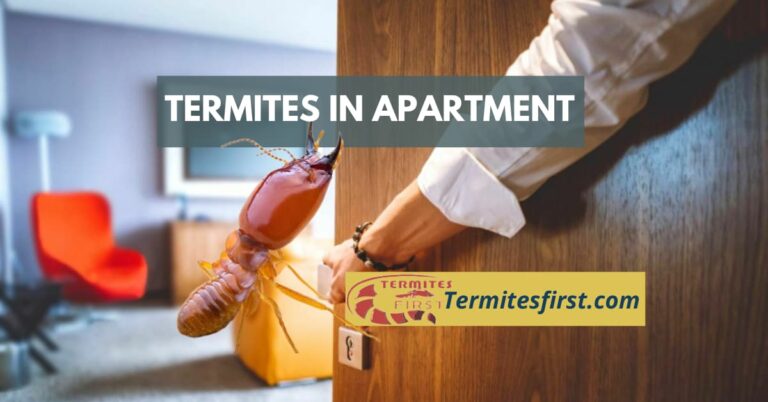What Causes Termites in My Home?
Have you ever wondered what causes termites to invade your home? These tiny pests can wreak havoc if left unchecked. I’ve seen firsthand how termite experts thrive in certain conditions, making regular termite inspections crucial to understand their triggers related to termite attractions and termite attack. Moisture is a biggie; it attracts them like a magnet. Wood, especially when it’s untreated, becomes their buffet.
Knowing the signs of termite activity helps me take action before it’s too late. Factors like poor drainage and wood-to-soil contact create ideal environments for these critters. By being aware of what causes termites, I can protect my space and save myself from costly repairs. Let’s dive deeper into the reasons behind these pesky invaders and learn how to keep them at bay.
Key Takeaways
- Termites thrive in moist environments, so fix any leaks and improve ventilation in your home to reduce moisture problems.
- Ensure proper drainage around your property to prevent water accumulation, which can attract termites.
- Regularly inspect wooden structures for signs of damage, as they are vulnerable to termite infestations.
- Seal entry points such as cracks and gaps in your home’s foundation to keep termites out.
- Be cautious with mulch; it can attract termites if it’s too close to your home, so use it wisely.
- Understand that geographic factors can influence termite activity, so research local risks and take appropriate preventive measures.
Common Causes of Termites
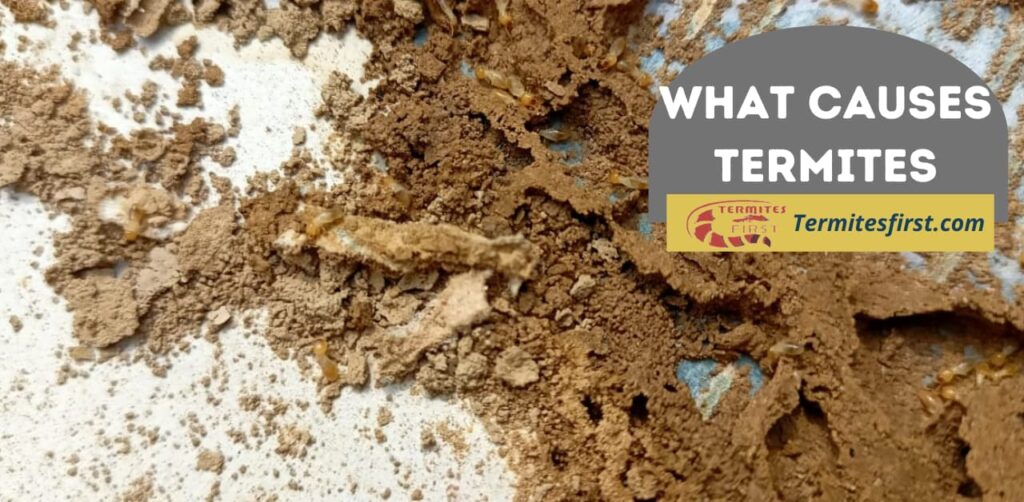
Wood Exposure
Termites feed on wood and cellulose materials. They thrive in environments where these materials are exposed. I often notice that old wooden decks or fences can attract termites if not maintained.
Wood piles left near the home can also be a common termite cause. When wood is in contact with the soil, it creates an easy entry point for termites. Keeping firewood stored away from the house helps reduce this risk.
Cracks and Holes
Sealing holes and cracks in your home is crucial. These openings allow termites to enter undetected. I have seen how quickly a small crack can lead to a severe termite infestation if ignored.
Regular inspections can help identify these vulnerabilities. Homeowners should pay attention to areas around windows, doors, and foundations. Proper sealing prevents termite activity and keeps homes safer.
Untreated Wood Risks
Untreated wood poses significant risks. It absorbs moisture, making it more attractive to termites. Many people do not realize that wood in contact with the ground is especially vulnerable.
I learned that using pressure-treated wood can help protect against termite damage. This type of wood resists decay and insect attacks. Homeowners should consider using treated materials for any outdoor structures.
Moisture Presence
Moisture attracts termites as well. Leaky pipes or poor drainage can create ideal conditions for them. I once had a neighbor who faced a serious termite problem due to a leaking gutter.
Keeping gutters clean and ensuring proper drainage is essential. Reducing moisture around the foundation helps deter termite colonies from forming nearby.
Landscaping Issues
Certain landscaping practices can invite termites too. Mulch piled against the house provides shelter and food sources for them. I always try to keep mulch at least six inches away from my home’s foundation.
Planting trees close to the house can also be risky. Roots may provide access points for subterranean termites, which live underground. I recommend monitoring landscaping choices carefully to avoid attracting these pests.
Swarming Season
Swarming termites signal new colonies forming nearby. This usually happens in spring when conditions are warm and moist. During this time, homeowners need to be vigilant about spotting signs of termite presence.
Termite droppings may appear as small pellets around infested areas. Identifying these signs early can prevent further damage and costly repairs.
Moisture Problems in Homes
Crawl Spaces
Crawl spaces often hold high moisture levels. These areas can trap water and humidity, creating a perfect environment for termites. I have seen many homes with neglected crawl spaces. They often become damp and dark, which attracts pests.
Proper ventilation is crucial in these spaces. Installing vents can help reduce moisture buildup. Homeowners should also consider using a dehumidifier to keep humidity levels in check. Regular checks can prevent serious infestations.
Leaky Plumbing
Leaky plumbing significantly contributes to termite attraction. Water leaks from pipes can create wet spots on walls and floors. Termites thrive in moist environments. I once encountered a home where leaky faucets led to a major termite problem. The damage was extensive and costly to repair.
Fixing leaks promptly is essential. Homeowners should inspect their plumbing regularly for any signs of water damage. This includes checking under sinks and around appliances. Taking these steps can help protect your home from unwanted pests.
Humidity Levels
Monitoring humidity levels is vital in reducing the likelihood of infestations. Termites prefer environments with humidity above 50%. Keeping indoor humidity below this level can deter them. I often recommend using a hygrometer to measure indoor humidity.
Using air conditioning or dehumidifiers can help maintain lower humidity levels. Ensuring proper drainage around the house is important. Downspouts should direct water away from the foundation. This helps keep the soil dry and less inviting for termites.
Roof Issues
Roof problems can also lead to moisture issues in homes. A damaged roof allows rainwater to seep into the house. This creates moisture that attracts termites. Regular roof inspections are necessary to catch any issues early.
Homeowners should look for missing shingles or cracks in the roof. These can lead to leaks over time. Repairing these problems quickly will help maintain a dry environment inside the home.
Drainage Issues and Infestations
Improper Drainage
Improper drainage is a major factor in termite infestations. Blocked gutters can trap water around the house. This pooling water creates a perfect environment for pests. I have seen homes where clogged gutters led to serious issues. Water collects near the foundation, inviting termites to settle in.
Inspecting drainage systems regularly helps prevent problems. Look for blockages that could cause water buildup. Clean gutters and downspouts often to ensure proper flow. Any grading issues around the foundation must be addressed as well. A slope that directs water towards the house can lead to future infestations.
Plumbing Problems
Leaky pipes are another source of moisture. Termites thrive in damp conditions, so plumbing leaks need immediate attention. I once encountered a home where a hidden leak caused extensive damage. The homeowners were unaware until it was too late.
Regular inspections of plumbing systems can catch leaks early. Check under sinks, around toilets, and near appliances for signs of moisture. Repair any leaks promptly to reduce the risk of attracting pests. Maintaining your plumbing also saves money on water bills.
Crawl Spaces and Eaves
Crawl spaces and eaves often trap humidity and moisture. These areas require careful monitoring to avoid infestations. Ventilation is crucial in keeping these spaces dry. I recommend checking these spots at least twice a year.
Ensure vents are clear and functional. If possible, install dehumidifiers in crawl spaces to control moisture levels. Sealing gaps and cracks in eaves can also prevent pests from entering the home.
Frequent Inspections
Frequent inspections by a pest control specialist can help detect potential issues early on. They know what signs to look for regarding termite activity. Early detection is crucial to managing infestations effectively.
Creating a routine inspection schedule can save time and money later on. Homeowners should consider annual inspections as part of their maintenance plan. It’s better to address small problems than wait for them to escalate into larger issues.
Vulnerability of Wooden Structures
Direct Contact
Wooden structures often face risks when they come into direct contact with soil or moisture. Termites thrive in damp environments. Soil provides both moisture and food sources, making it a prime location for these pests.
I have seen how quickly wood can deteriorate when it is exposed to moisture. Even small leaks can lead to significant damage over time. When wooden structures sit directly on the ground, they become vulnerable. This creates an easy path for termites to invade.
Untreated Wood
The use of untreated wood in construction poses serious risks. Untreated wood lacks protective chemicals that can resist insect damage. This type of wood is more appealing to termites since it contains cellulose, their primary food source.
In many homes, untreated wood is used in basements and crawl spaces. These areas often experience higher humidity levels, which attract termites. I always recommend using treated wood for any construction near the ground.
Bridging Risks
Wood can serve as a bridge from the ground to the home. This connection increases the risk of termite infestations. For instance, wooden decks or staircases that touch the ground can allow termites direct access.
Overhanging branches can provide a pathway for termites to reach wooden structures. I have noticed that homeowners often overlook these simple connections. Regular inspections can help identify these vulnerabilities before they become serious problems.
Signs of Damage
Identifying signs of termite damage early is crucial. Homeowners should look for mud tubes along foundations or hollow-sounding wood. Other indicators include discarded wings near windows or doors.
I remember a friend who ignored these warning signs until it was too late. The cost of repairs was significant due to extensive damage caused by termites.
Prevention Measures
Taking preventive measures can help protect wooden structures from termite damage. Keeping wood away from direct soil contact is essential. Homeowners should also ensure proper drainage around their properties.
Using metal barriers can deter termite entry points as well. Regular inspections by professionals can catch infestations early on.
Entry Points and Structural Weaknesses
Foundations
Termites often enter homes through cracks in the foundation. These small openings allow them to access wooden structures. I once found a tiny gap in my foundation that led to a serious termite issue. Regularly inspecting the foundation can prevent this problem.
Homeowners should look for any visible cracks. Even minor gaps can be potential entry points. Sealing these cracks with caulk or concrete can help protect your home.
Walls
Gaps in walls also serve as entry points for termites. They can tunnel through wood and create pathways into your home. I’ve noticed that even the smallest hole can attract termites.
Inspecting walls for signs of damage is essential. Look for soft spots or holes where pests could enter. Repairing damaged areas will strengthen the wall and deter termites.
Roof and Eaves
The roof and eaves are often overlooked but can have vulnerabilities. Termites may find their way in through damaged shingles or gaps around vents. I always check my roof during seasonal maintenance to ensure it is intact.
Sealing any openings in the roof is crucial. This includes checking for broken shingles or gaps at the eaves. Proper maintenance helps keep termites out and protects the entire structure.
Tunnels and Bridges
Termites build tunnels or bridges to navigate from one area to another. These structures help them reach food sources like wood in your home. I’ve seen these tunnels firsthand, and they can be quite extensive.
Regular inspections can help identify these tunnels early. Look for mud tubes along foundations or walls. Removing these tunnels can disrupt termite activity and prevent further damage.
Backyards
Your backyard can also be a source of termite entry. Wood piles, mulch, and other organic materials attract termites close to your home. I learned that keeping wood away from the house reduces risks significantly.
Maintain a clean yard by removing debris and storing firewood away from the foundation. This practice limits termite access and keeps your home safer.
Mulch Attraction
Moisture Retention
Mulch serves many purposes in landscaping. It helps retain moisture in the soil. However, this can also attract termites. They thrive in damp conditions. I often notice that mulch beds near my home stay wet longer than other areas. This moisture creates an ideal environment for termite colonies to develop.
Keeping mulch away from the foundation of your home is crucial. A distance of at least six inches is recommended. This simple step can significantly reduce the risk of termite infestation. I find it helpful to create a clear barrier between the mulch and the house. This way, I can ensure that no excess moisture builds up against my home’s structure.
Inspection Routine
Regular inspections of mulch areas are essential. Look for signs of decay or infestation. Termites often leave behind mud tubes or frass, which is their droppings. These indicators can help identify a problem early on. If you notice any unusual activity, take action immediately.
I make it a habit to check my garden regularly. I look for any changes in the mulch or surrounding plants. Early detection can save time and money when dealing with pests like
Type of Mulch
The type of mulch used can also influence termite attraction. Organic mulches, such as wood chips or bark, are more appealing to termites than inorganic options like rubber or gravel. Organic materials break down over time, creating a food source for these pests.
When planning my landscaping, I choose my mulch carefully. I prefer using inorganic materials around my home’s foundation. This decision helps minimize the risk of attracting termites while still maintaining a beautiful landscape.
Landscaping Considerations
Landscaping choices impact termite behavior as well. Plants that are close to the foundation may provide shelter for termites. Keeping shrubs and trees trimmed back reduces hiding spots for these pests. I always ensure there’s enough space between plants and my home’s walls.
Avoid stacking firewood or debris near the house. These items can serve as a food source and nesting site for termites. Instead, store firewood at least 20 feet away from your home and elevate it off the ground.
Geographic Factors
Climate Influence
Certain areas have a higher risk of termite infestations due to their climate. Termites thrive in warmer, wetter environments. Regions with high humidity and consistent warmth create a hospitable environment for these pests. In the United States, states like Florida and Texas report significant termite activity.
I often think about how different climates affect pest control strategies. For example, homeowners in humid regions need to be extra vigilant about termites compared to those in cooler areas.
Local Species
Different places host various species of termites. For instance, the Eastern Subterranean termite is common in the eastern U.S. Meanwhile, the Formosan termite is prevalent in southern states like Louisiana. Each species has unique behaviors and preferences that influence infestation patterns.
Understanding local termite species can help homeowners take preventive measures. Knowing what types are nearby allows for targeted treatments.
Soil Conditions
l type plays a role in termite activity. Moist, sandy soils tend to attract termites more than dry or clay-heavy soils. This is because sandy soils retain moisture better, providing an ideal source for termites to thrive.
In my experience, inspecting the soil around a property can reveal potential risks. Areas with damp soil may require additional protective measures against these pests.
Building Materials
The exterior materials of a property also matter. Structures built with wood are more vulnerable to termite damage. Termites feed on cellulose found in wood products. Therefore, homes made from untreated wood have a higher chance of attracting termites.
I recommend using treated wood for outdoor structures. It provides better protection against these pests and can reduce the risk of infestations significantly.
Regional Patterns
Termite activity varies by region and season. Warmer months often see increased activity as termites swarm to find new nesting sites. Homeowners should be aware of these seasonal patterns to take action when necessary.
In some areas, termite inspections are recommended annually, especially before peak swarming seasons. I find that staying informed about regional risks helps me make better decisions regarding home maintenance.
Environmental Factors
Natural disasters can impact termite populations too. Floods may displace colonies while droughts can drive them toward homes seeking moisture. Understanding these environmental factors can help identify potential infestation points.
Being proactive is crucial in maintaining your property’s integrity. Regular inspections and awareness of geographic factors can save homeowners from costly repairs caused by termites.
Types of Termites and Their Preferences
Subterranean Termites
Subterranean termites are the most common type in the United States. They live underground and build intricate tunnels to access food sources. These termites prefer moist environments, often found in soil near wood or decaying plant material.
I noticed that these termites can cause significant damage without being seen. Their hidden nests make it hard to detect their presence until it’s too late.
Drywood Termites
Drywood termites differ from subterranean ones. They do not require contact with soil. Instead, they nest in dry wood, such as furniture or structural beams. These termites thrive in warm climates and can be found in attics or wooden structures.
Their feeding habits are unique. They consume wood from the inside out, leaving a thin outer layer intact. This makes it challenging to spot an infestation early.
Dampwood Termites
Dampwood termites prefer wood with high moisture content. They often infest decaying trees or untreated lumber left in damp areas. These termites are less common but can still cause damage if conditions are right.
Their nesting sites are usually near water sources, such as leaky pipes or standing water. I learned that addressing moisture issues can help prevent these pests from settling in.
Feeding Habits and Risks
Different termite species have distinct feeding habits. Subterranean termites feed on cellulose found in wood, paper, and other plant materials. Drywood termites also consume cellulose but do so by tunneling through solid wood. Dampwood termites primarily eat decaying wood.
Understanding these habits helps identify potential risks for homeowners. For instance, a house with untreated wood near moist soil is at risk for subterranean infestations. Similarly, drywood termites could invade wooden furniture if not properly maintained.
Termite specialists recommend regular inspections to catch infestations early. Homeowners should be aware of signs like discarded wings or hollow-sounding wood.
Prevention Tips and Strategies
Regular Inspections
Implementing regular inspections is crucial. Homeowners should check their property at least twice a year. This helps catch infestations early. I often look for signs such as mud tubes or discarded wings around my home. These indicators can reveal the presence of termites. Early detection allows for timely treatment, reducing damage.
Proper Ventilation
Educating yourself on proper ventilation techniques can reduce moisture in your home. Termites thrive in damp environments. Ensure attics and crawl spaces are well-ventilated. I noticed that installing vents improved air circulation in my basement. This change significantly reduced humidity levels and made my home less inviting to pests.
Consult Professionals
Consulting professionals is another effective strategy. Experts can provide advice on termite-resistant materials and treatments. They often know the best solutions tailored to specific situations. For instance, they might recommend using pressure-treated wood for construction. This type of wood resists termites better than untreated options.
Food Sources
Eliminating food sourLimiting access points also plays a key role in prevention. Inspect your home for cracks and crevices where termites could enter. Seal any gaps in the foundation, walls, or roof. I always make it a habit to check window screens and door frames for damage. Keeping these areas secure reduces the opportunity for termites to invade.ces is essential in preventing termite infestations. Termites feed on cellulose found in wood and paper products. Store firewood away from your home and keep mulch at least 15 inches from foundations. I learned that even old newspapers can attract these pests if not stored properly.
Access Points
Limiting access points also plays a key role in prevention. Inspect your home for cracks and crevices where termites could enter. Seal any gaps in the foundation, walls, or roof. I always make it a habit to check window screens and door frames for damage. Keeping these areas secure reduces the opportunity for termites to invade.
Careful Landscaping
Practicing careful landscaping can help guard against termites as well. Avoid planting trees or shrubs too close to the home’s foundation. Roots can create pathways for termites to access wood structures. I prefer keeping plants trimmed back and maintaining a clear area around my house.
Signs of Infestation
Being aware of signs of infestation is vital for homeowners. Look for hollow-sounding wood or small holes in wooden surfaces. Discarded wings near entry points may also indicate an active colony nearby. I once found wings scattered near my porch, prompting me to conduct a thorough inspection.
Conclusion:-
Understanding what causes termites is crucial for protecting our homes. I’ve shared key factors like moisture problems, drainage issues, and vulnerabilities in wooden structures. Each plays a role in attracting these pests. By recognizing these causes, I can take proactive steps to prevent infestations.
Now that I know the risks, it’s time to act. Implementing prevention tips can save me from costly damage. Regular inspections and maintenance are essential. Don’t wait until it’s too late. Stay informed, stay vigilant, and protect your home from termites today.
FAQ’s:
Termites are attracted to moisture, wood, and cellulose materials. Areas with high humidity or water leaks are particularly appealing. Mulch and wooden structures near the foundation can invite infestations.
Look for signs like mud tubes, discarded wings, or hollow-sounding wood. You may also notice damaged wood or droppings resembling sawdust. If you suspect an infestation, consult a pest control professional.
Yes, all types of termites can cause damage to wooden structures. Subterranean termites are the most destructive, while drywood termites primarily affect furniture and structural wood. It’s important to address any type promptly.
Absolutely! Regular maintenance is key. Keep wood away from soil, fix leaks, and ensure proper drainage. Using termite-resistant materials in construction can also reduce risks significantly.
Yes, geographic factors play a significant role. Warmer climates typically have higher termite populations. Regions with high humidity levels also provide ideal conditions for termite activity.
It’s recommended to inspect your home for termites at least once a year. However, if you live in a high-risk area, consider more frequent inspections to catch potential infestations early.
If you discover termites, act quickly. Contact a licensed pest control expert immediately to assess the situation and implement effective treatment options. Early intervention can save your property from severe damage.


